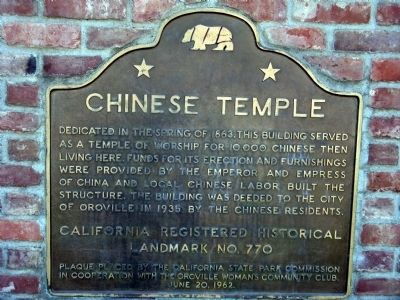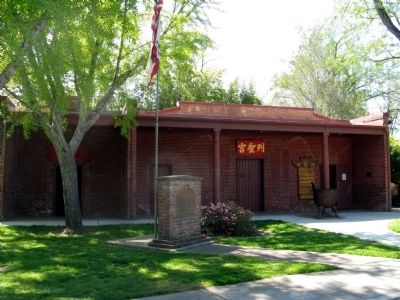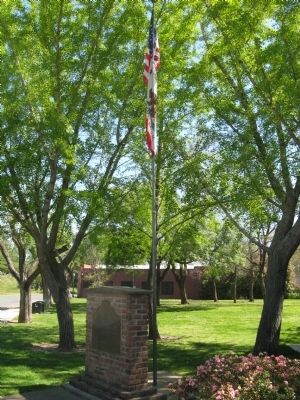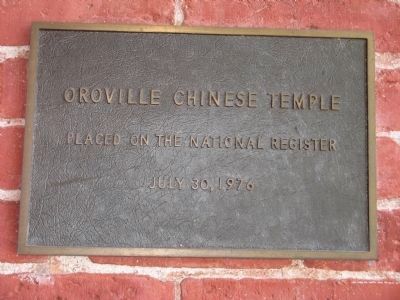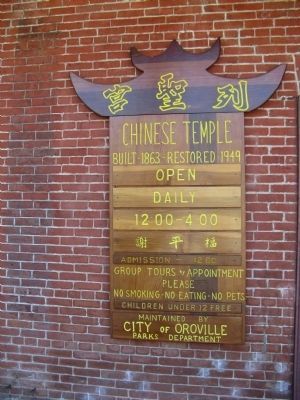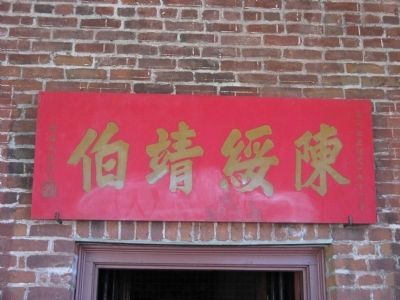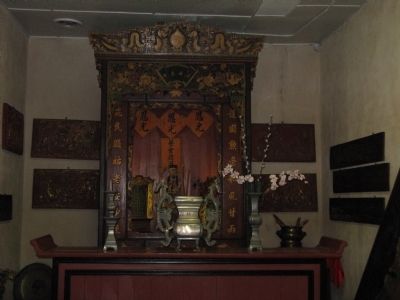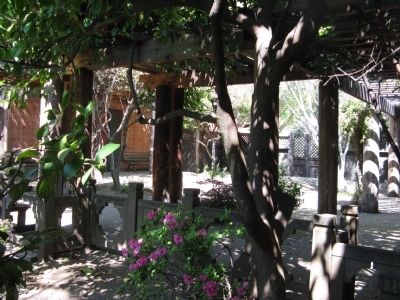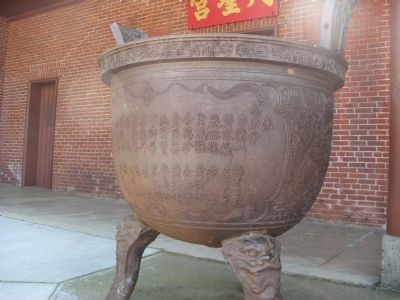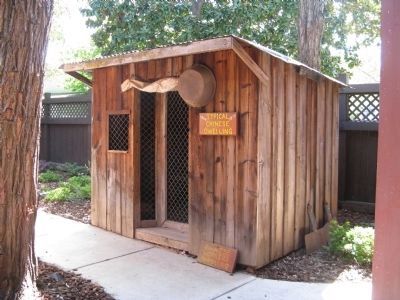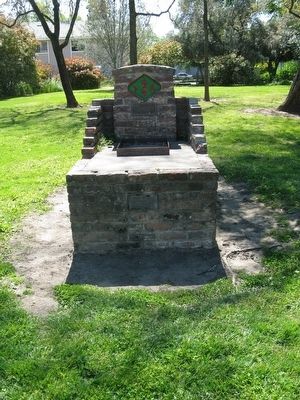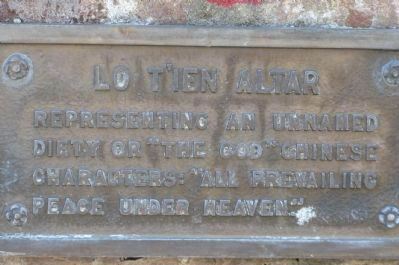Oroville in Butte County, California — The American West (Pacific Coastal)
Chinese Temple
Erected 1962 by The California State Park Commission in cooperation with the Oroville Woman’s Community Club, June 20, 1962. (Marker Number 770.)
Topics and series. This historical marker is listed in these topic lists: Asian Americans • Churches & Religion • Industry & Commerce • Settlements & Settlers. In addition, it is included in the California Historical Landmarks, and the Chinese Heritage Sites of the American West series lists. A significant historical year for this entry is 1863.
Location. 39° 30.821′ N, 121° 33.702′ W. Marker is in Oroville, California, in Butte County. Marker is on Broderick Street, on the right when traveling east. Touch for map. Marker is at or near this postal address: 1500 Broderick Street, Oroville CA 95965, United States of America. Touch for directions.
Other nearby markers. At least 8 other markers are within walking distance of this marker. Oroville Carnegie Library (approx. 0.2 miles away); Oroville Municipal Airport (approx. 0.2 miles away); First Liberty Pole In The West (approx. ¼ mile away); Gardella-Reece Building (approx. ¼ mile away); Butte County Court House at Oroville (approx. ¼ mile away); First Pharmacy (approx. 0.3 miles away); Gray Nurse Hardware (approx. 0.3 miles away); Liberty Pole (approx. 0.3 miles away). Touch for a list and map of all markers in Oroville.
Regarding Chinese Temple. This site was designated as California Registered Historical Landmark No.770 on January 31, 1962 and was placed on the National Register of Historic Places on July 30, 1976.
Also see . . . University of California Bancroft Library. Built in 1863, the Oroville Chinese Temple served as a place of worship for a community of 10,000 Chinese residents. An innovative collaboration among the City of Oroville, Gloria Gee, the Library of Congress, and The Bancroft Library has resulted in online access to a digital archive of the Oroville Chinese Temple treasures. (Submitted on April 6, 2009, by Syd Whittle of Mesa, Arizona.)
Additional commentary.
1. The Chinese Temple
In the latter half of the nineteenth century there were as many as 3,500 Chinese people in Oroville. The came to search for gold. For the first twenty years there were only men, as they were not allowed to bring their families. Most of them came from the Shanghai and Canton areas of China.
Around 1850 they built their first temple. It was made of wood and it burned down. They rebuilt it, also from wood, and it also burned. They purchased bricks and in 1863 the new temple was finished. This is the temple that still stands today. In the immediate vicinity there was a Joss House, a large store, and a theater. The Chinese area of Oroville was near the Feather River and the brick temple endured many floods. After the flood of 1907 and a general depression, most of the Chinese moved away.
The Chinese people that remained took care of the Temple until the 1930's. They gave the property to the City of Oroville in 1937 and the City made three promises. The first was to build a museum, the second was to keep the three temples open for worship, and the third was to teach about the customs and beliefs of the Chinese people.
— Submitted April 7, 2009, by Syd Whittle of Mesa, Arizona.
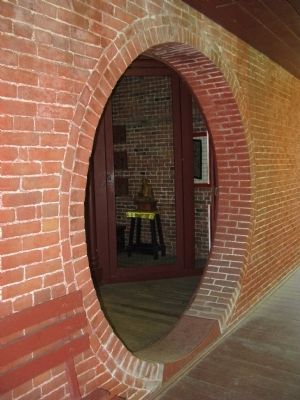
Photographed By Syd Whittle, April 6, 2009
8. Entrance to the Moon Room
Built in 1868, on the floor above the Council Room is Wong Fut Tong, which is called the Moon Temple because of its circular door. This signifies the circle of life. This room devoted to Buddha is the most religious room in the complex.
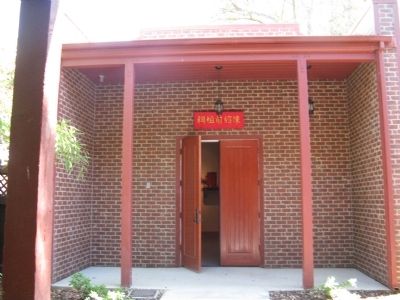
Photographed By Syd Whittle, April 6, 2009
10. Fong Lee Room
This is the newest room at the complex. Dedicated April 16, 2008. the room is a gift of the Chin (Chan) Shew Ting Family. Displayed are the drawers used to hold herbal medicine sold here as well as the scales and items used for buying and selling gold.
Credits. This page was last revised on April 26, 2022. It was originally submitted on April 6, 2009, by Syd Whittle of Mesa, Arizona. This page has been viewed 2,644 times since then and 26 times this year. Last updated on December 22, 2016, by Michael Kindig of Elk Grove, California. Photos: 1, 2, 3. submitted on April 6, 2009, by Syd Whittle of Mesa, Arizona. 4, 5. submitted on April 7, 2009, by Syd Whittle of Mesa, Arizona. 6, 7. submitted on April 6, 2009, by Syd Whittle of Mesa, Arizona. 8, 9, 10, 11, 12, 13, 14. submitted on April 7, 2009, by Syd Whittle of Mesa, Arizona.
